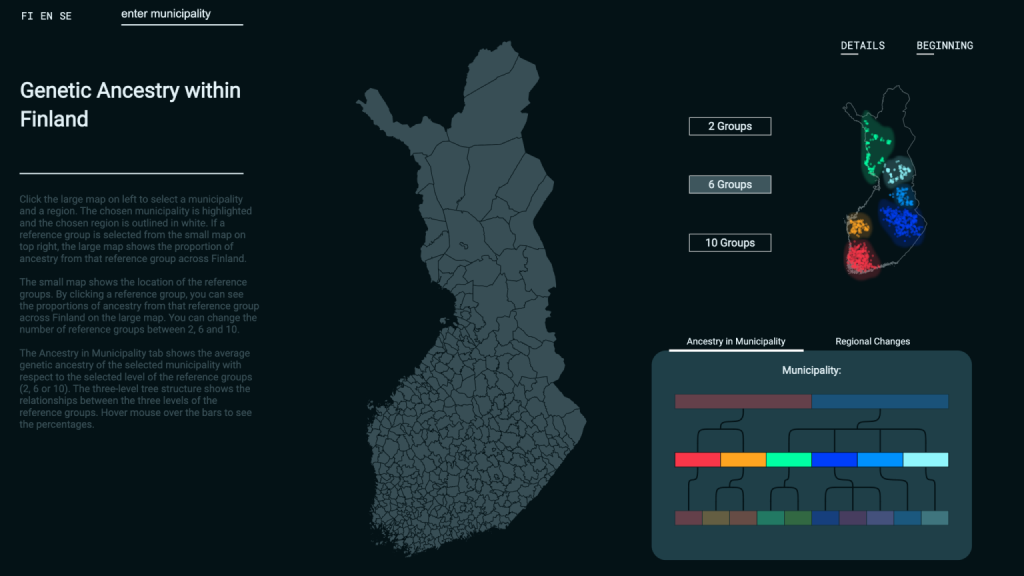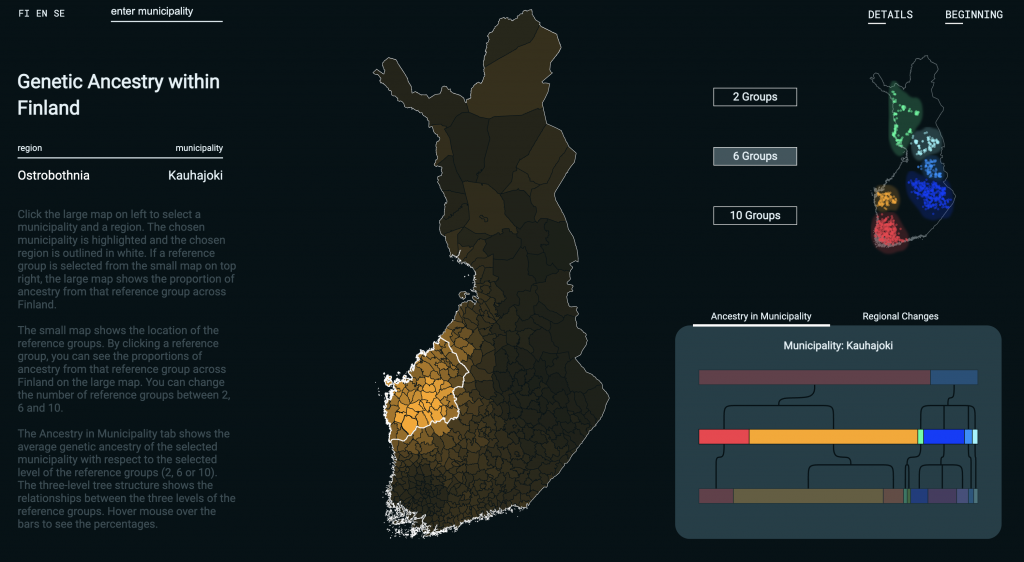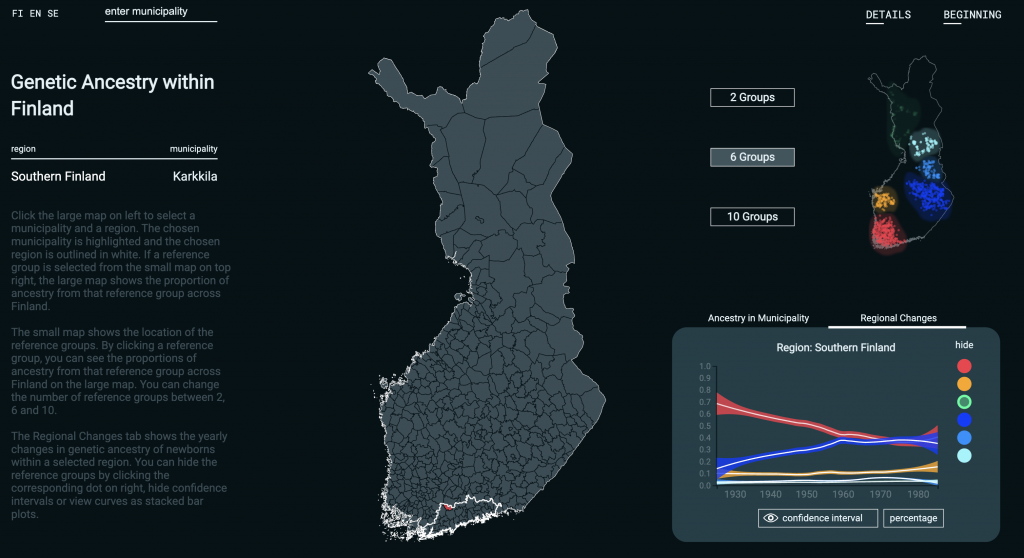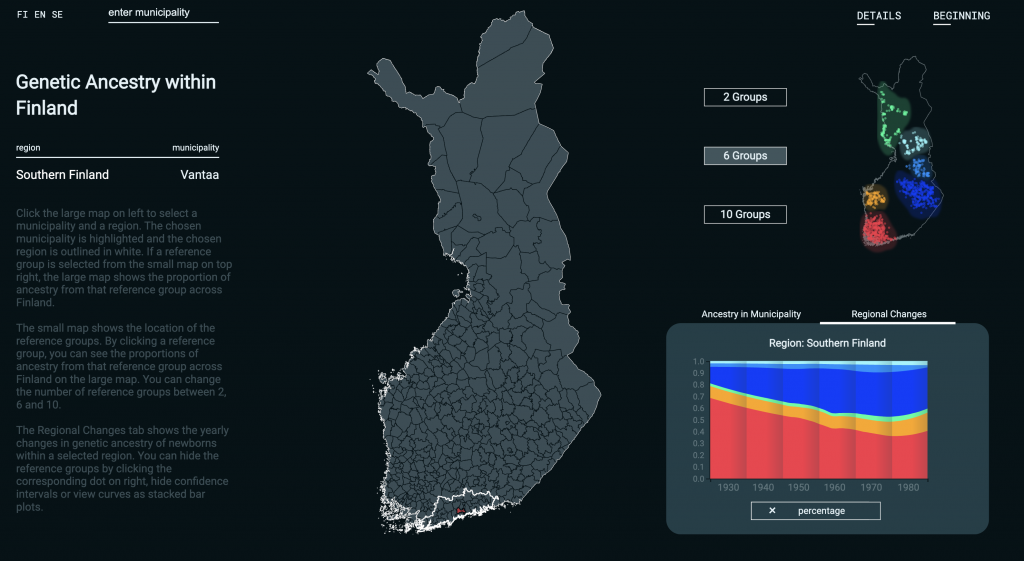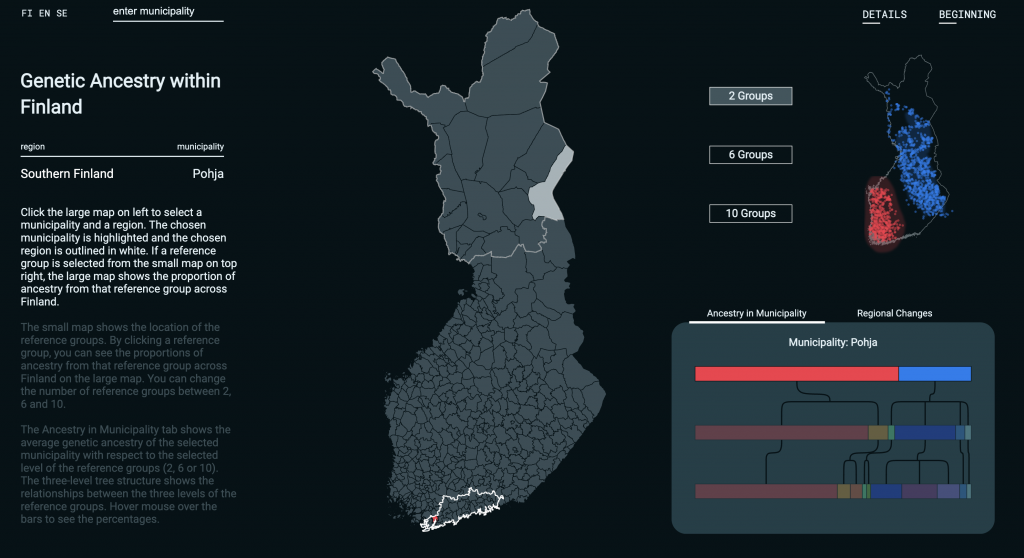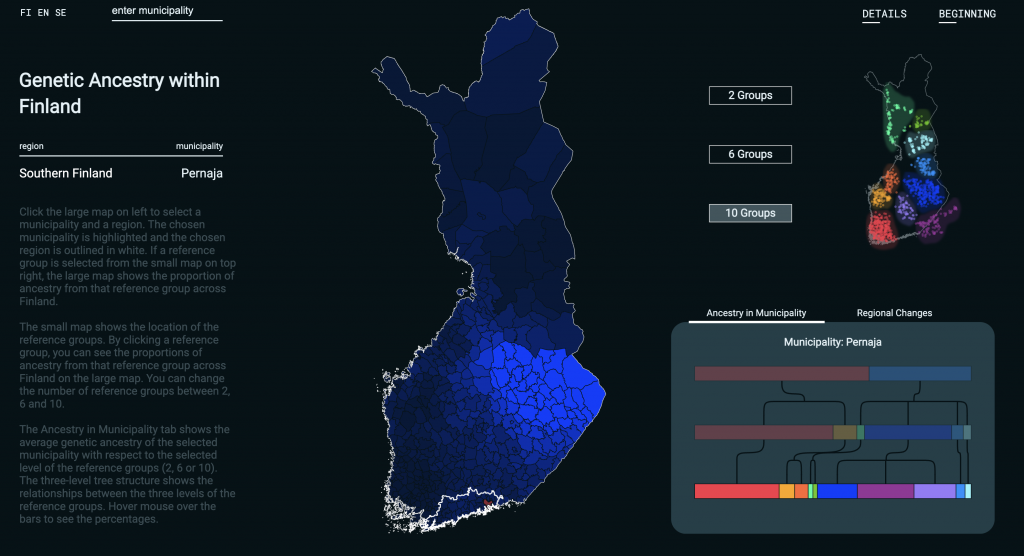Welcome to study the genetic structure and genetic ancestry within Finland during the 20th century. This website presents the results published in PLoS Genetics on March 4, 2021, and extends the earlier results of the fine-scale genetic structure in Finland published in October 2017.
Genetic ancestry refers to the set of ancestors from whom an individual inherits genetic information. In theory, it could be identified based on matches between the DNA sequence of an individual and his/her ancestors. Unfortunately, this is typically not possible, as DNA samples of the ancestors are rarely available.
Luckily, genetic ancestry can be efficiently approximated with statistical methods that look for approximate matches to a set of well-chosen, geographically-defined reference genomes rather than to the exact ancestors. This is what we have done here for over 18,000 Finnish individuals. Our results show how the genetic ancestry at different regions of Finland has evolved in the 1900s and what the composition of genetic ancestry has been at each municipality during that period.
We remind that genetic ancestry does not determine individuals’ ethnicity, nationality, or race that are social rather than genetic concept. Note also that the terms ‘Finnish individuals’ or ‘the Finns’, as used in either social or legal context, are not defined through an individual’s genetic ancestry. We discuss these issues and our results more in the application.
Who conducted the study?
The study was conducted by researchers at the Institute for Molecular Medicine Finland (FIMM) of the University of Helsinki, together with the Finnish Institute for Health and Welfare (THL). The web application was implemented by the researchers at the Department of Media Design of Aalto University.
Funding information
The study was funded by the University of Helsinki, the Academy of Finland, and by the Sigrid Jusélius Foundation. The work on interactive Visualisation was funded by the Department of Media, Aalto ARTS, Aalto University.
